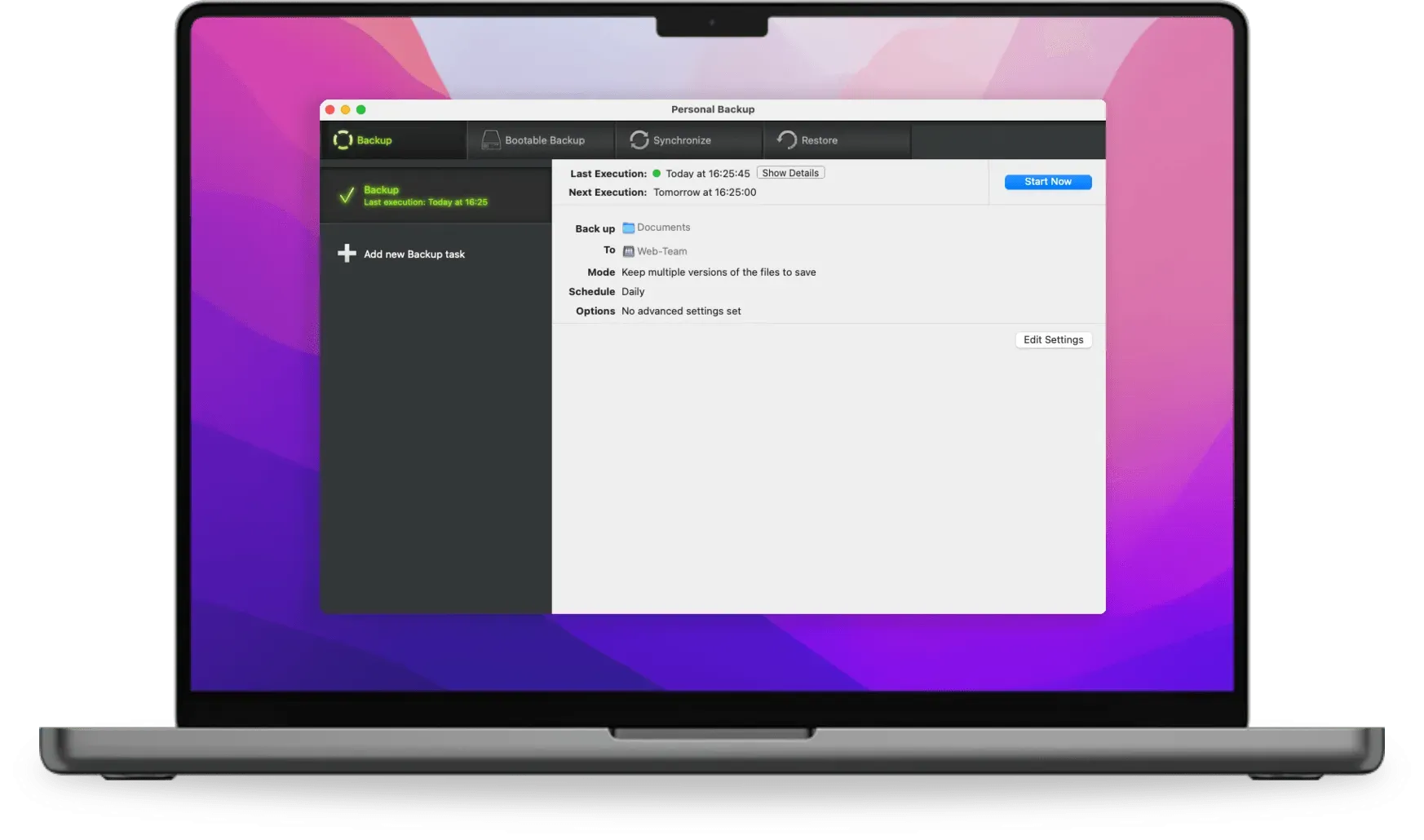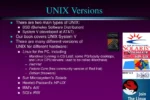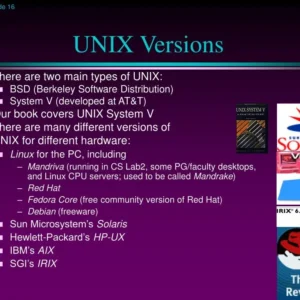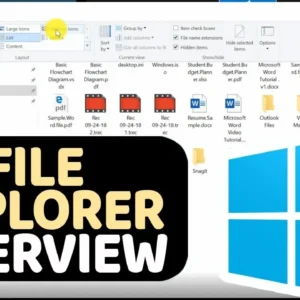Bootable backups are an essential aspect of data security for Mac users, providing a reliable way to restore a system in case of failure. With the recent updates in macOS Sequoia, particularly version 15.3, the once problematic SuperDuper! app has regained its ability to create bootable backups without the errors that plagued earlier versions. This backup utility is vital for users of Apple Silicon Macs who require a straightforward method to safeguard their data. Unlike Apple’s Time Machine, which does not support bootable backups, SuperDuper! offers a more comprehensive solution for maintaining system integrity. As technology evolves, ensuring your backup strategies are up to date can make all the difference in system recovery scenarios.
When discussing the concept of bootable backups, alternative terms such as system images and recovery drives often come into play. These terms describe similar functionalities, where users can create exact copies of their operating systems to restore from in the event of a failure. For Mac users, especially those utilizing the latest Apple Silicon architecture, tools like the SuperDuper! backup utility have become crucial for effective data management. Although Apple’s Time Machine offers robust backup solutions, it lacks the ability to create bootable copies, thus making dedicated utilities essential for complete system recovery. As we navigate through the complexities of modern macOS versions, understanding these backup options becomes increasingly important for safeguarding personal data.
Understanding Bootable Backups on macOS Sequoia
A bootable backup is an essential safety net for Mac users, particularly with the launch of macOS Sequoia. This feature allows users to create a complete copy of their system that can be booted directly from an external drive. The recent bug that impacted the SuperDuper! app highlighted the importance of reliable backup utilities in ensuring that users can recover their systems in case of failure. With the resolution of this bug in macOS 15.3, users can once again create bootable backups without encountering the previous ‘Resource Busy’ error during the replication process.
While the fix for SuperDuper! has been implemented, it’s crucial to understand that creating a bootable backup does not guarantee that it will work seamlessly in every situation. Users must be aware that, particularly with Apple Silicon Macs, the architecture has changed significantly compared to Intel-based systems. The Signed System Volume used in Apple Silicon devices can complicate the booting process from external drives, making it imperative for users to stay informed about these developments.
The Role of SuperDuper! and Time Machine in Backups
SuperDuper! has long been a favored backup utility among Mac users, especially for those who value the ability to create bootable backups. With recent updates addressing issues caused by macOS 15.2, the application has regained its functionality, allowing users to back up their Data volumes effectively. However, it is crucial to note that while SuperDuper! can create these backups, the overall landscape of backup utilities is changing, with many, including Apple’s Time Machine, not focusing on bootable backups anymore.
Time Machine serves as an excellent incremental backup solution for macOS users, but it does not offer the capability to create bootable backups. This limitation highlights the need for users to utilize specific utilities like SuperDuper! or Carbon Copy Cloner for that purpose. As developers adapt to the evolving macOS landscape, users must evaluate their backup strategies, considering how each utility fits into their overall data protection plan.
Challenges with Apple Silicon and Bootable Backups
With the transition to Apple Silicon, Mac users face unique challenges regarding bootable backups. The introduction of the Signed System Volume has enhanced security, but it has also complicated the recovery process. If this volume becomes damaged, the Mac may fail to boot, rendering traditional bootable backups ineffective. Users must now reconsider their backup strategies, focusing on both data integrity and the ability to recover their systems quickly in emergencies.
Moreover, many users have reported difficulties in using external drives for booting due to these changes. While bootable backups were a reliable safety measure in the past, the current architecture of Apple Silicon devices necessitates a more robust understanding of system recovery options. Users may need to explore alternative methods of securing their data, such as cloud backups alongside physical backups, to ensure comprehensive protection.
Apple’s Response to Backup Utility Issues
Apple’s recent updates to macOS Sequoia demonstrate a commitment to resolving critical issues affecting backup utilities like SuperDuper!. The company has acknowledged the concerns raised by developers and users alike regarding the functionality of bootable backups. This response not only reflects Apple’s dedication to improving user experience but also highlights the complexity of maintaining compatibility with various backup solutions.
Despite the fixes implemented in macOS 15.3, it is essential for users to remain vigilant regarding the performance of their backup solutions. While SuperDuper! may now work more reliably, the landscape of backup utilities continues to evolve, and users should regularly check for updates or changes in functionality. Staying informed will empower users to make educated decisions about their backup strategies.
User Feedback and Community Support
Community feedback plays a crucial role in shaping the development of backup utilities like SuperDuper! and Time Machine. Users sharing their experiences in forums have highlighted both successes and ongoing challenges in creating bootable backups. The collaborative nature of these discussions often leads to valuable insights that developers can use to enhance their applications, ensuring they meet user needs effectively.
Moreover, forums and communities provide a platform for users to seek assistance when encountering issues with backup utilities. As seen with the discussions surrounding the SuperDuper! app, many users have reported intermittent success in creating backups, prompting developers to investigate further. This engagement fosters a sense of community among Mac users, who can collectively navigate the complexities of data protection.
The Importance of Regular Backups
In the digital age, the importance of regular backups cannot be overstated. For Mac users, utilizing tools such as SuperDuper! and Time Machine ensures that their data remains secure and recoverable in case of hardware failure or accidental data loss. Establishing a routine for creating backups, especially bootable backups, provides peace of mind, knowing that a recent copy of the system is always available.
Regular backups also allow users to experiment with updates and software changes without the fear of losing critical data. With the challenges posed by Apple Silicon’s architecture, having a reliable bootable backup means users can swiftly restore their systems to a functional state should any issues arise during updates. This proactive approach to data management is essential for maintaining productivity and safeguarding important information.
Future Trends in Backup Utilities
As technology continues to advance, the future of backup utilities for macOS will likely evolve to address emerging challenges and user needs. Developers may focus on integrating cloud solutions with traditional backup methods to enhance accessibility and redundancy. This trend reflects a growing recognition of the importance of flexibility in backup strategies, allowing users to access their data from various devices and locations.
Additionally, as Apple continues to innovate, backup utilities will need to adapt to new features and security protocols introduced in future macOS updates. Developers may explore ways to seamlessly integrate bootable backups into their offerings, ensuring that users can maintain the same level of protection they relied on in the past. Staying ahead of these trends will be crucial for both developers and users to ensure effective data management.
Understanding the Mac Ecosystem and Backup Solutions
Navigating the Mac ecosystem requires an understanding of the various backup solutions available to users. With a diverse range of applications, each offering unique capabilities, it is essential for users to choose tools that align with their specific needs. For instance, while Time Machine provides an excellent option for incremental backups, users seeking bootable backups must rely on specialized utilities like SuperDuper! or Carbon Copy Cloner.
Moreover, understanding the interplay between different backup solutions and macOS features is crucial. As Apple continues to implement changes affecting how data can be backed up and restored, users must remain informed about these updates. This comprehension will allow users to maximize their backup strategies, ensuring that they are prepared for any potential data loss scenarios.
Best Practices for Creating Bootable Backups
Creating bootable backups is a critical best practice for Mac users, particularly those utilizing Apple Silicon devices. To ensure a successful backup process, users should familiarize themselves with the specific requirements of their backup utility, such as SuperDuper!. Following the recommended steps for creating a bootable backup can help minimize errors and ensure that the backup is functional when needed.
Additionally, users should regularly test their bootable backups to confirm their reliability. This practice involves attempting to boot from the backup drive to verify that it functions correctly. By incorporating this step into their backup routine, users can gain confidence in their backup solutions and be better prepared for unexpected issues that may arise.
Frequently Asked Questions
What are bootable backups and how do they work with macOS Sequoia?
Bootable backups are copies of your Mac’s operating system and files that allow you to start your computer from an external drive in case of system failure. With macOS Sequoia, the SuperDuper app can create these bootable backups effectively after recent bug fixes, enabling users to recover their systems more efficiently.
Can I create bootable backups using the SuperDuper app on Apple Silicon Macs?
Yes, you can create bootable backups using the SuperDuper app on Apple Silicon Macs. However, it’s important to note that booting from external drives may not work as expected due to the Signed System Volume architecture in Apple Silicon, which can complicate recovery processes.
How does the Time Machine backup utility handle bootable backups?
Time Machine does not create bootable backups; it primarily focuses on incremental backups of files and system settings. If you need a bootable backup solution, consider using the SuperDuper app or other similar backup utilities that support this feature.
What issues did macOS Sequoia introduce for bootable backups?
macOS Sequoia initially caused issues for bootable backups by disrupting the functionality of the SuperDuper app, leading to failures during the replication process. However, with the release of macOS 15.3, these specific issues have been addressed, restoring the ability to create bootable backups.
Are bootable backups still necessary for users of Apple Silicon Macs?
While bootable backups were essential for Intel-based Macs, their necessity is diminished for Apple Silicon Macs due to changes in system architecture. Users are encouraged to explore other backup options like Time Machine for file recovery, though having a bootable backup can still provide an additional layer of security.
What alternatives exist for creating bootable backups besides SuperDuper?
Alternatives for creating bootable backups include Carbon Copy Cloner and other backup utilities that support this feature. However, it’s important to verify their compatibility with macOS Sequoia and Apple Silicon architecture to ensure effective backups.
How can I troubleshoot issues with bootable backups on macOS?
To troubleshoot bootable backup issues on macOS, ensure that you are using the latest version of your backup utility, check for updates to macOS, and verify that your external drive is properly formatted and functioning. If problems persist, consult the support forums for your backup utility or Apple for additional guidance.
What is the significance of the ‘Erase, then copy’ method for bootable backups?
The ‘Erase, then copy’ method is significant for creating bootable backups as it ensures that the destination drive is cleared of any previous data, preventing conflicts and ensuring a clean installation of the backup. This method is now supported again in the SuperDuper app after the recent fixes in macOS Sequoia.
| Key Point | Details |
|---|---|
| Bug Fix | macOS 15.3 fixes the issue with SuperDuper! failing to create bootable backups. |
| User Experience | Users reported intermittent issues with SuperDuper! under macOS 15.2, confirming it was a bug. |
| Backup Utility Limitations | Most backup utilities, including Apple’s Time Machine, no longer attempt to create bootable backups. |
| Apple Silicon Compatibility | Bootable backups are less effective on Apple Silicon Macs due to the use of a Signed System Volume. |
| Historical Context | Previously, bootable backups were essential for quickly recovering from a failing Mac. |
Summary
Bootable backups are crucial for Mac users who wish to maintain a reliable recovery option, especially during system failures. Apple’s recent fix in macOS 15.3 allows the SuperDuper! utility to successfully create bootable backups without encountering a resource error. While this resolves a significant issue, it does not guarantee that all booting scenarios will function as intended, particularly for users with Apple Silicon Macs. Understanding the limitations of backup utilities is essential for ensuring data safety and recovery options.










